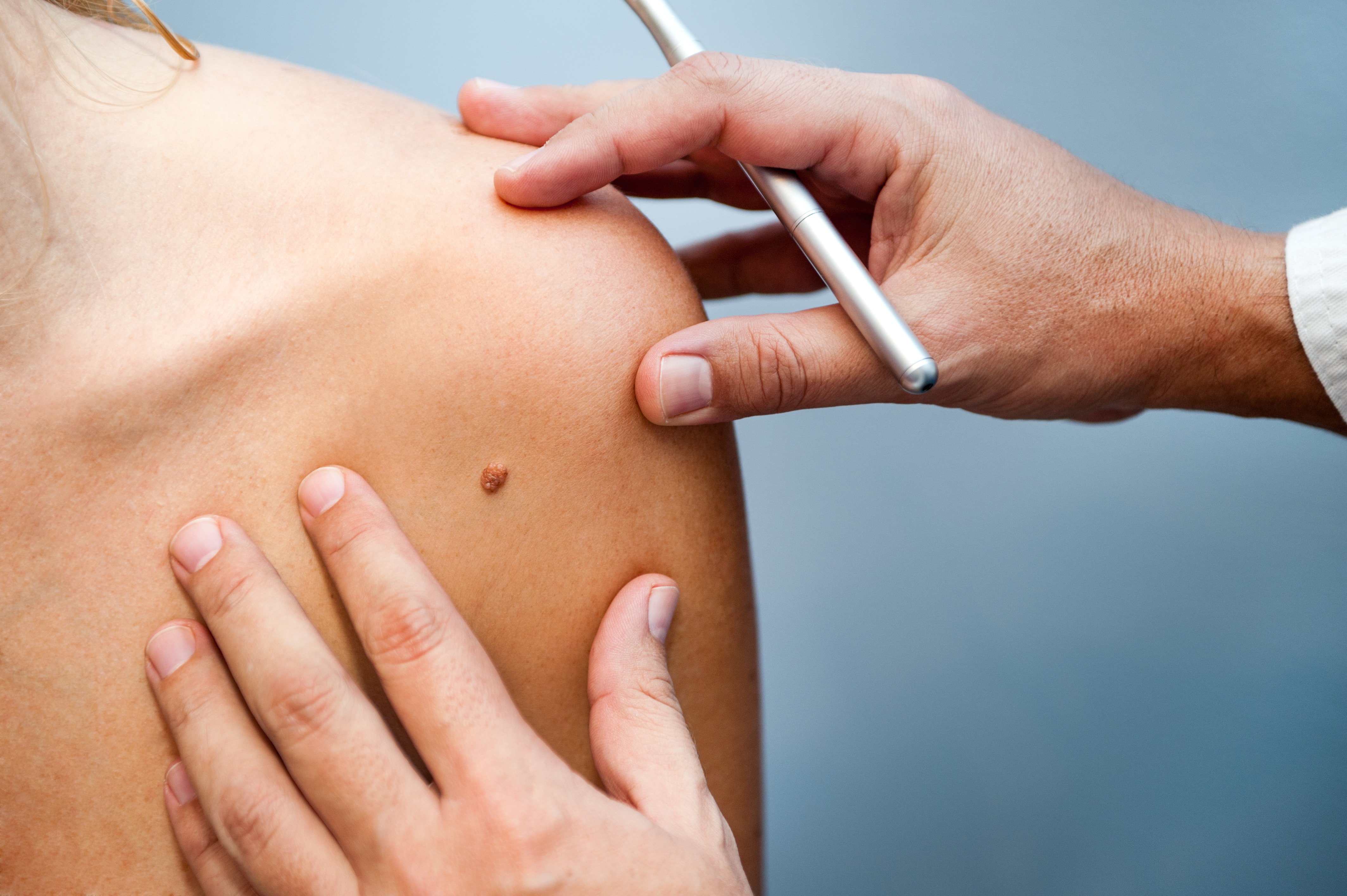The sooner skin cancer is identified and treated, the better your chance of avoiding surgery or – in the case of a serious melanoma or other form of skin cancer – potential disfigurement or death. Skin cancers found and removed early are almost always curable. If you notice anything about your skin that you feel looks abnormal, or you feel worried about anything on your skin, consult your GP or dermatologist as soon as possible.
*Information derived from Irish Cancer Society and NHS
7 top tips for self-examination
When checking your skin for the first time, you need to a little bit of research on the various types of skin cancers and pre-cancerous skin lesions, as well as what you should be looking out for in terms of new appearances on the skin and things that have been hanging around for a while.
- Skin cancers generally don’t hurt – there are more often seen rather than felt
- It is important to get to know your skin and being familiar with what is normal. Know where any moles, birthmarks and other marks are and what they usually look and feel like to you. This way you can easily spot changes if they occur
- When checking your skin: undress completely, make sure you have good light and use a full length and hand-held mirror or get someone to help you check any hard to see places
- It is important to check your entire body – that includes the soles of your feet, the palms of your hands, genitals, buttocks, under the breasts, between your fingers and toes and under your nails, your face, neck, ears and scalp
- To check your scalp: use a comb or hairdryer to move your hair around so you can see better or ask someone to help you check – they may be able to see better
- Raise your arms and check your left and right sides
- It is recommended that you check your skin once a month, or if you have been a sufferer of skin cancer previously your doctor may recommend you check more often
Basic warning signs to look out for
A normal mole is usually an evenly coloured brown, tan or black spot on the skin. It can be either flat or raised and also round or oval. It is usually less than the size of the top of a pencil.
Moles can be there from birth or can appear during childhood or adolescence. Once a mole appears it will usually stay the same size, shape and colour for many years. Most people have moles and almost all are harmless, but it is important to be conscious and spot changes in a mole. This could mean the mole is becoming a melanoma.
Melanoma (a type of skin cancer that can spread to other organs in the body) mainly develops from a new mole or a change to an existing mole.

Changes to watch out for:
A mole that looks different from your other moles, or a mole, birthmark, beauty mark or brown spot that:
- Changes in shape – from a round shape to an irregular shape with one half unlike the other
- Changes in size/thickness - is bigger than 6mm or 1/4", the size of the top of a pencil
- Varies in colour – changing from one colour to many shades of tan, brown or other colours
- Loses colour - appearing pearly or translucent
- Looks red or inflamed around the edges
- Is an open sore that doesn’t heal or continues to itch, hurt, crust, scab, erode or bleed
- Changes in texture – feels different, itchy or painful
- Has a new red or darker coloured flaky patch that may be raised
- Appears after the age of 21
Other ways melanoma can present
Not all melanomas develop from moles, so it is important to speak to your doctor if you spot other skin changes that are unusual for you. Melanoma can present in a number of other ways including any of the following:
- A small lump
- Flat, red spot
- Firm, red lump
- A lump or spot that is tender to touch
- An ulcer that will not heal
- A lump with a scaly or horny top
- Rough, scaly patches
- A new or changing mole
- A new flesh-coloured firm bump
Non-melanoma
Non-melanoma (a group of cancers that slowly develop in the upper layers of the skin) often appears as one of the following:
- A new growth or sore that does not heal in a few weeks
- A spot or sore that continues to itch, hurt, crust, scab or bleed
- A skin ulcer not explained by other causes
Children & checking
It is important to check your children's skin for signs of change too. Naturally, moles will develop on the skin up until their teens. At this point it is important to teach them how to self-examine their skin and know what to look for. No new moles should appear generally after the age of 21.
While skin cancer is much less common in children, melanoma can strike young people and be fatal, thus it is important to check your children’s moles often, especially if they have one or more atypical mole.
Keep a record
It can be helpful to record your findings and the dates of your skin examinations as it is hard to remember so much detail and thus recognise a change the next time. Recording your findings on a body map for example could mean the difference between spotting something early or something going unnoticed.

